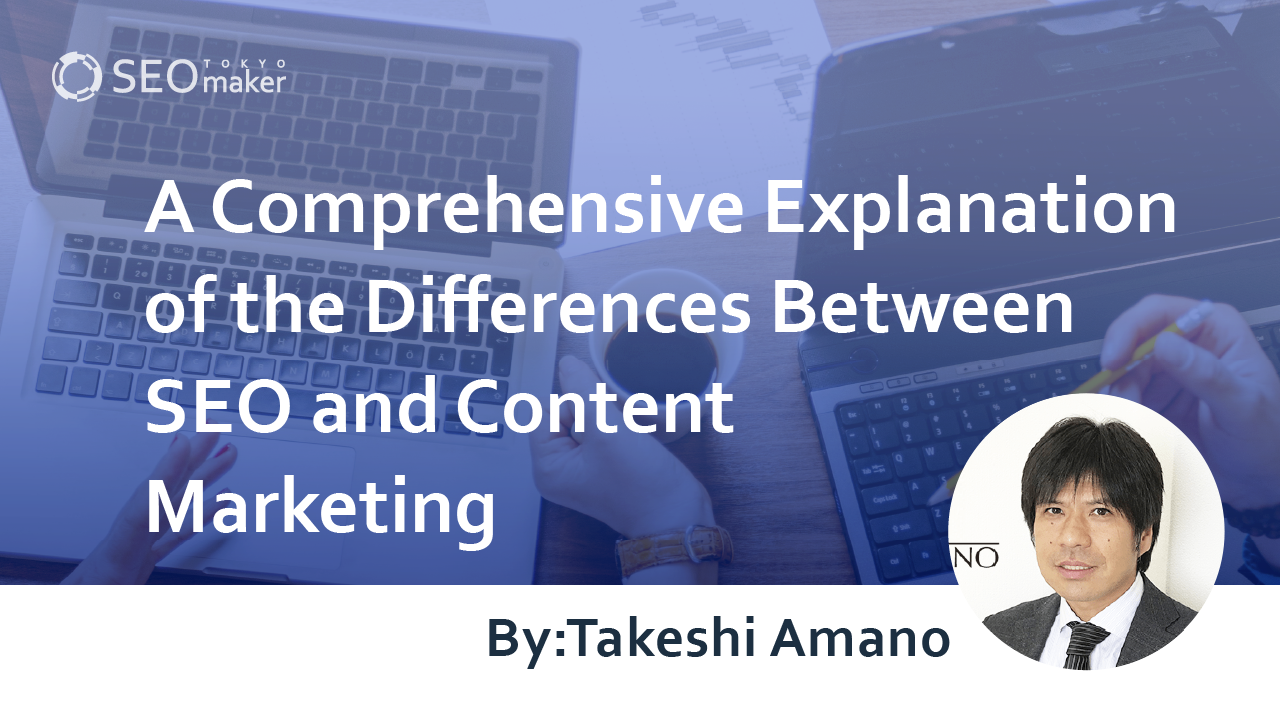Differences Between SEO and Content Marketing : Comprehensive Explanation
contents

In today’s rapidly changing business landscape, companies are deploying various strategies to survive. Central to these strategies is marketing.
When we talk about marketing, many might immediately think of SEO. While there are many aspects to marketing, content marketing is one such strategy. However, even those familiar with the terms may wonder, ‘What exactly is the difference between SEO and content marketing?’
Today, we will explain the basics and differences between SEO and content marketing.
What is SEO?
SEO stands for Search Engine Optimization.
SEO is a common technique in web marketing strategies, where a higher evaluation from Google makes a website more likely to appear at the top of search results. When users search, sites that are deemed capable of fulfilling the user’s search intent with relevant keywords are displayed in order.
To appear at the top, it’s necessary to meet Google’s evaluation criteria. These criteria are regularly updated, and sites previously rated highly can drop in ranking after an update. Furthermore, Google does not disclose these criteria clearly, making it difficult to fully optimize for them.
Google operates on a ‘user-first’ philosophy, making it crucial to create content that benefits users. Besides content creation, optimizing the internal structure of a site can also be effective.
The Importance of SEO in Marketing
Content highly rated by Google tends to appear at the top of search results, making SEO a critical component in web marketing to increase traffic opportunities.
Users are more likely to visit a site that appears at the top of search results, increasing visitor numbers for those sites. Companies use their websites to promote products and services, and more visits can lead to more sales opportunities.
For example, consider a company thinking about implementing a tool to ease sales operations. Users searching for ‘sales tool’ will likely see articles introducing sales support tools and websites offering such tools. Typically, they access sites that appear at the top, increasing the likelihood of user action as a result.
What is Content Marketing?
Content marketing is a marketing strategy that involves continually providing valuable content to users, gradually turning them into loyal fans and leading to purchases.
Marketing typically includes inbound and outbound strategies, with content marketing falling under inbound marketing.
Inbound marketing aims to initiate user-driven actions and values two-way communication, while outbound marketing starts from the company’s side, including door-to-door sales and mass mailing of direct mails.
In content marketing, it’s crucial to continually offer valuable content to the users.
The Importance of Content Marketing
Content marketing is an effective marketing strategy because it continually provides valuable content to users, turning potential customers into prospects.
Potential customers are users who are unaware of your company’s products or services. These customers simply lack knowledge of what you offer, but if given the opportunity to learn, they may consider purchasing and become prospects. Once they are prospects, detailed explanations about specific products or services can lead to negotiations and potentially result in purchases.
Moreover, content marketing encompasses other marketing tactics. For instance, it includes aspects of content SEO and social media marketing.
Differences Between SEO and Content Marketing
There are several differences between SEO and content marketing. Let’s discuss four of them.
-Purpose
-Target
-Method
-Content
Purpose
The goals of SEO and content marketing differ. The aim of SEO is to create content that is highly rated by Google and achieves top placement in search results.
On the other hand, content marketing aims to induce user actions, referred to as ‘conversions’ in the marketing industry. It’s crucial in content marketing to drive conversions.
Examples of conversions include inquiries through contact forms, requests for information, and actual orders for products or services.
Thus, it is effective to use SEO to increase traffic by achieving higher rankings, and to enhance conversions through content marketing
Target
SEO and content marketing slightly differ in their targets. SEO, being a technique for search engine optimization, targets both explicit and latent layers of potential users. In contrast, content marketing often focuses more on gaining awareness from the latent layer.
In SEO, the primary goal is to achieve top rankings in search results, targeting both explicit and latent users.
On the other hand, content marketing primarily targets the latent layer, aiming to drive purchases from user awareness generated through high-volume keywords.
Methods
The approaches in SEO and content marketing also differ. SEO is focused solely on achieving high rankings in Google’s search engine, hence its marketing channel is limited to search engines.
However, content marketing uses all possible marketing channels beyond SEO, making SEO a subset of content marketing strategies. This includes distributing videos on YouTube, utilizing email newsletters, and engaging on social media platforms.
Content
As explained in the methods section, the channels used in each strategy lead to differences in the types of content.
SEO aims for top search result rankings, primarily using text-based content such as blogs and websites.
Content marketing, however, encompasses a wider range of content types, including videos and emails, in addition to text content.
>>Check Content SEO
Summary
Today, we discussed the basics and differences between SEO and content marketing. These two are often mistakenly thought to be the same, but they actually have distinct purposes and approaches. In marketing, it is not about focusing solely on one but incorporating both strategies effectively. Specifically, this involves increasing site traffic through SEO and ensuring the content leads to quality conversions. If you are grappling with your company’s marketing strategies, consider starting with the creation of high-quality content as discussed in this article.










![What is a Description? Explaining the Meaning, Writing Style, and Changing Word Count – [2023 Edition]](https://www.switchitmaker2.com/en/wp-content/uploads/2024/09/what-is-description.webp)










